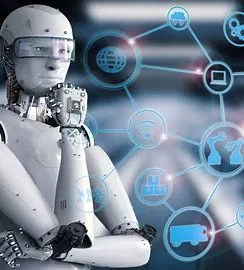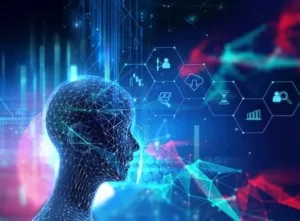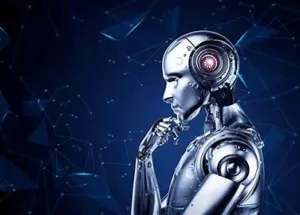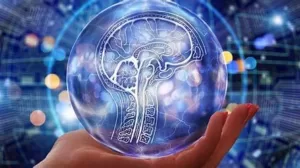Exploring the Potential of AI to Help Reduce Carbon Emissions
The potential of artificial intelligence (AI) to help reduce carbon emissions is an exciting prospect. AI can be used to analyze data and identify patterns that can help us better understand the causes of climate change and how to mitigate its effects. AI can also be used to develop new technologies and strategies to reduce emissions and increase energy efficiency.
AI can be used to analyze large amounts of data to identify patterns and trends in energy consumption. This can help us better understand how energy is used and how to reduce its use. AI can also be used to develop new technologies and strategies to reduce emissions. For example, AI can be used to develop algorithms that can optimize energy use in buildings and factories, or to develop new renewable energy sources.
AI can also be used to develop new strategies for reducing emissions. For example, AI can be used to develop strategies for reducing emissions from transportation, such as optimizing traffic flow or developing new public transportation systems. AI can also be used to develop strategies for reducing emissions from industry, such as optimizing production processes or developing new energy-efficient technologies.

AI can also be used to develop new strategies for reducing emissions from agriculture. For example, AI can be used to develop strategies for reducing emissions from livestock, such as optimizing feed production or developing new methods of animal husbandry. AI can also be used to develop strategies for reducing emissions from land use, such as optimizing land use for carbon sequestration or developing new methods of sustainable agriculture.
Finally, AI can be used to develop new strategies for reducing emissions from waste management. For example, AI can be used to develop strategies for reducing emissions from waste disposal, such as optimizing waste management systems or developing new methods of recycling.
In conclusion, AI has the potential to help reduce carbon emissions by analyzing data, developing new technologies and strategies, and optimizing energy use and waste management. AI can help us better understand the causes of climate change and how to mitigate its effects, and can help us develop new strategies for reducing emissions.
How AI Can Help Us Make More Sustainable Decisions
In recent years, the need for more sustainable decisions has become increasingly important. As the world population continues to grow, the demand for resources is also increasing, leading to a greater strain on the environment. Fortunately, artificial intelligence (AI) can help us make more sustainable decisions.
AI can be used to analyze large amounts of data quickly and accurately, allowing us to make more informed decisions. For example, AI can be used to analyze data on energy consumption, water usage, and waste production. This data can then be used to identify areas where improvements can be made to reduce the environmental impact of our decisions.
AI can also be used to develop more efficient and sustainable solutions. For example, AI can be used to develop algorithms that can optimize energy usage in buildings, or to develop more efficient transportation systems. AI can also be used to develop more efficient manufacturing processes, which can reduce the amount of energy and resources used in production.
AI can also be used to develop more sustainable products. For example, AI can be used to develop products that are made from sustainable materials, or that are designed to last longer and require less maintenance. AI can also be used to develop products that are more energy efficient, such as LED lighting or solar panels.

Finally, AI can be used to develop more sustainable business models. For example, AI can be used to develop models that take into account the environmental impact of a company’s operations, and to identify areas where improvements can be made. AI can also be used to develop models that take into account the social and economic impacts of a company’s operations, allowing companies to make more sustainable decisions.
In conclusion, AI can be used to help us make more sustainable decisions. By analyzing data, developing more efficient and sustainable solutions, and developing more sustainable products and business models, AI can help us reduce our environmental impact and make more sustainable decisions.
The Impact of AI on Sustainable Agriculture
The advent of artificial intelligence (AI) has revolutionized many industries, and agriculture is no exception. AI has the potential to revolutionize sustainable agriculture, allowing farmers to increase yields while reducing their environmental impact.
AI can be used to optimize crop production, allowing farmers to maximize yields while minimizing inputs. AI-driven precision agriculture systems can monitor soil conditions, weather, and other factors to determine the optimal time to plant, irrigate, and harvest crops. This can reduce the amount of water, fertilizer, and other inputs needed to produce a given crop, reducing the environmental impact of agriculture.
AI can also be used to detect and diagnose crop diseases and pests. AI-driven systems can monitor crops for signs of disease or pests, allowing farmers to take action before the problem becomes too severe. This can reduce the need for chemical pesticides and fertilizers, further reducing the environmental impact of agriculture.
AI can also be used to improve the efficiency of livestock production. AI-driven systems can monitor livestock health and nutrition, allowing farmers to optimize their feed and care for their animals. This can reduce the amount of feed and water needed to produce a given amount of meat, reducing the environmental impact of livestock production.
Finally, AI can be used to improve the efficiency of food distribution. AI-driven systems can monitor food supply chains, allowing farmers to optimize their distribution networks and reduce food waste. This can reduce the amount of energy and resources needed to transport food, further reducing the environmental impact of agriculture.
In conclusion, AI has the potential to revolutionize sustainable agriculture, allowing farmers to increase yields while reducing their environmental impact. AI-driven systems can optimize crop production, detect and diagnose crop diseases and pests, improve the efficiency of livestock production, and improve the efficiency of food distribution. By leveraging the power of AI, farmers can produce more food with fewer resources, helping to create a more sustainable future for agriculture.
AI-Powered Solutions for Sustainable Energy Production
The world is facing an unprecedented energy crisis, and the need for sustainable energy production has never been greater. Fortunately, advances in artificial intelligence (AI) are providing new solutions to this pressing problem. AI-powered solutions are helping to reduce energy consumption, increase efficiency, and create new sources of renewable energy.
One of the most promising applications of AI in energy production is in the area of energy efficiency. AI-powered algorithms can be used to analyze energy usage data and identify areas where energy can be saved. AI can also be used to optimize energy production processes, such as scheduling and load balancing, to ensure that energy is used as efficiently as possible.
AI can also be used to create new sources of renewable energy. AI-powered algorithms can be used to identify areas where renewable energy sources, such as solar and wind, can be most effectively utilized. AI can also be used to optimize the design of renewable energy systems, such as solar panels and wind turbines, to maximize their efficiency.
Finally, AI can be used to improve the safety and reliability of energy production. AI-powered algorithms can be used to monitor energy production systems and detect potential problems before they become serious. AI can also be used to automate the maintenance of energy production systems, ensuring that they are running at peak efficiency.
AI-powered solutions are revolutionizing the way energy is produced and consumed. By leveraging the power of AI, we can create a more sustainable energy future and ensure that our planet has the energy it needs to thrive.

The Role of AI in Sustainable Urban Planning and Development
The role of Artificial Intelligence (AI) in sustainable urban planning and development is becoming increasingly important. AI is a powerful tool that can be used to analyze large amounts of data and identify patterns that can be used to inform decisions about urban planning and development. AI can be used to identify areas of potential growth, identify areas of risk, and develop strategies for sustainable development.
AI can be used to analyze data from a variety of sources, including census data, economic data, and environmental data. This data can be used to identify areas of potential growth and development, as well as areas of risk. AI can also be used to identify areas of potential environmental impact, such as air and water pollution, and develop strategies to mitigate these impacts. AI can also be used to identify areas of potential economic development, such as areas with high potential for job growth or areas with potential for investment.
AI can also be used to develop strategies for sustainable development. AI can be used to identify areas of potential energy efficiency, such as areas with potential for renewable energy sources or areas with potential for energy conservation. AI can also be used to identify areas of potential waste reduction, such as areas with potential for recycling or composting. AI can also be used to identify areas of potential water conservation, such as areas with potential for water reuse or areas with potential for water harvesting.
AI can also be used to develop strategies for urban planning and development that are more equitable and inclusive. AI can be used to identify areas of potential economic development that are accessible to all members of the community, such as areas with potential for job growth or areas with potential for investment. AI can also be used to identify areas of potential environmental impact that are accessible to all members of the community, such as areas with potential for air and water pollution.
In conclusion, AI is a powerful tool that can be used to analyze large amounts of data and identify patterns that can be used to inform decisions about urban planning and development. AI can be used to identify areas of potential growth and development, identify areas of risk, and develop strategies for sustainable development. AI can also be used to develop strategies for urban planning and development that are more equitable and inclusive.







